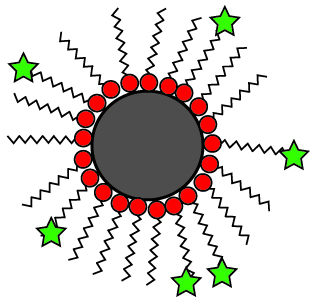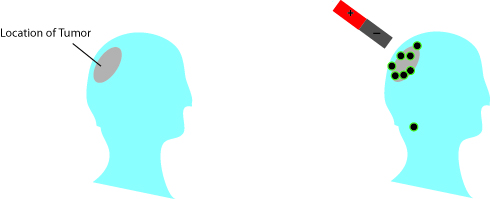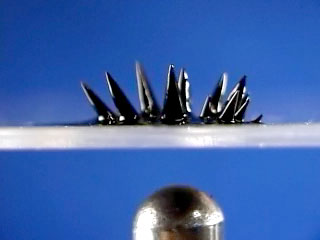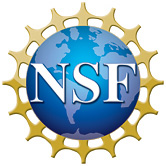Smart Medicine
Introduction
Cancer develops when abnormal cells in the body begin to grow and spread very fast. These bad cancer cells are often not that different from healthy cells, which makes cancer treatment difficult. Most cancer treatments kill some of the healthy cells along with the bad cells, making patients sick. What if you could design a treatment that would only target the cancer cells and leave the healthy cells untouched? Nanotechnology may one day make this possible.
While nanotechnology is not yet used to treat diseases, many new technologies are being tested. Scientists have many ideas about how nanoparticles might be used to combat diseases.
Nano-magnets
One promising idea for cancer treatment is using magnetic nanoparticles to carry the drug to the tumor area. When cancer drugs enter the blood stream, they get pumped through the body's system of arteries and veins. The drugs reach the tumor but also every other part of the body. Cancer drugs are designed to kill cancer cells but since they can go anywhere in the bloodstream, they may also kill healthy cells. Attaching drugs to magnetic particles would allow doctors to keep the medicine in a specific place by using magnets to hold them there. Using nano-sized particles is key because they are small enough to go through the blood stream.

The grey magnetic nanoparticle is surounded by surfactants (red) that have drug molecules on them (green stars).

Doctors can use magnets to concentrate the nanoparticles, and therefore the drugs in in the area of the disease.
Ferrofluids are magnetic nanoparticles that are suspended in a fluid. When magnets are brought near ferrofluids, the liquid forms spikes along the magnetic field lines. Besides their medical potential, ferrofluids are already used in some rotating shaft seals and as dampers for high-end loudspeakers.

Delivery with Buckyballs
Scientists are also testing fullerenes for drug delivery. Many drug molecules can be attached to a fullerene. The medicine loaded fullerene can then be attached to an antibody. Antibodies are Y-shaped proteins that can recognize and attach to things in the body called antigens. Viruses, bacteria and diseases in the body each have unique antigens. The antibody finds the disease in the body then the attached fullerene delivers the appropriate medicine. Just like with magnetic nanoparticles, medicine can be sent only to place where it is needed, leaving healthy cells alone.

An antibody will only attach to a specific antigen that is the right shape.

Fullerenes can be loaded with medicine (green) and attached to an antibody (pink) which will seek out the disease antigen.





